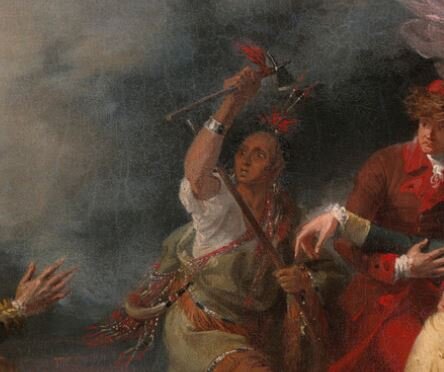In August 1775, at the outbreak of the Revolutionary War, Louis came to George Washington’s camp in Cambridge, Massachusetts, to volunteer for the Patriot cause. He then accompanied General Montgomery’s invasion of Canada.
Soon after, Louis again visited Washington at Cambridge, offering the services of America Indian troops. In June, he served in the Canada campaign with Brigadier General Benedict Arnold (the latter seceding to the British in 1780); Louis’ service was praised by Colonel James Wilkinson, who said “Colonel Louis, the faithful chief of the Kahnawake tribe [was] the only Canadian who accompanied the army in its retreat from Canada.”
In 1777, General Philip Schuyler called on Louis to command 150 Oneida and Tuscarora warriors at the Battle of Saratoga. Within one week, “they had intercepted several British messengers and had brought in 30 prisoners.” And in March 1779, Louis directly subverted the efforts of Mohawk War Captain Joseph Brant to enlist Mohawk warriors for the Loyalists. At General Schuyler’s urging, the “Commission of Lieutenant Colonel in the Army of the United States was granted to Louis Atayataronghta, giving the said Louis Rank from the 15 June, 1779.”
In October 1781, renewed British attacks on the Mohawk Valley were led by Captain Walter Butler. Butler was pursued by Colonel Louis’s American Indian force and killed. In July 1782, Congress renewed Louis’ commission as Lieutenant-Colonel, and he served with honor for the rest of the war.
During the War of 1812, aged 77, he led Tuscarora troops at the Battle of Lundy’s Lane, later dying from the wounds he sustained: “His death was announced by the discharge of cannon, as was due to his rank in the army.”


